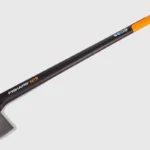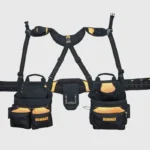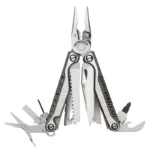From the earliest stone implements to today’s digitally-enhanced devices, hand tools have shaped our world in more ways than one. Let’s unpack this fascinating evolution and see how a simple stone axe led to the sophisticated gadgets filling our modern toolboxes.
Early Beginnings
The saga begins during the Stone Age, a time when our ancestors wielded rudimentary tools carved from rock. These were not mere gadgets but lifelines, essential for survival. They hunted, built shelters, and crafted clothing—all through the power of simple stone tools. Picture a group of early humans around a freshly discovered fire, their stone tools scattered nearby, critical for their day-to-day survival.
As millennia passed, human societies advanced, and so did their tools. The Bronze Age brought with it the first major revolution—metal tools. Imagine the transformative shift from brittle stone to durable bronze. Tools became more reliable and versatile, sparking a surge in creativity and construction.
The Iron Age further revolutionized toolmaking. Iron replaced bronze, offering a harder, more enduring material. Tools were now sharper, more resilient, and varied. This era saw the birth of many tools still essential today, like the hammer and chisel. It wasn’t just a change in material but a leap in cultural and economic development, enabling civilizations to build, farm, and fight with greater efficiency.
Middle Ages and Renaissance
Enter the Middle Ages, a time when the blacksmith reigned supreme. Picture the fiery forge in a dusty medieval village, where the blacksmith converts raw iron into tools of trade and warfare. Each hammer strike not only shaped metal but also the course of communities and kingdoms.
During the Renaissance, an explosion of new tools appeared, reflecting more specialized crafts and trades. This period refined tools that were crucial not just for survival but for artistic and architectural innovation. The saw, plane, and lathe, each evolved, driven by the demands of Renaissance artistry and engineering. This era was marked by a flourish of creativity and detailed craftsmanship, supported by ever-more sophisticated tools.
Industrial Revolution
The Industrial Revolution marked a turning point for hand tools. Factories began mass-producing items that had once been painstakingly crafted by hand. This era’s innovations made tools like wrenches and screwdrivers widely available and affordable, transforming tool ownership from a luxury to a commonplace. Visualize bustling Victorian factories with steam-powered machines churning out tools by the thousands, symbolizing progress and the dawn of modern industry.
As tool production skyrocketed, so did the need for standardization. This was the era that introduced the concept of interchangeable parts. Imagine a world where any screw fits perfectly into any screwdriver—this idea was revolutionary at the time. It provided consistency in manufacturing and repair, simplifying processes and broadening tool use across various sectors.
20th Century Innovations
The 20th century brought a major innovation: power tools. Drills, saws, and sanders were supercharged with electricity, dramatically reducing manual labor. These weren’t just upgrades; they were complete game-changers for construction and home improvement, enabling projects that once took days to be completed in hours.
Alongside power tools, new materials such as stainless steel and later, plastics, began to appear. Tools became lighter, rust-resistant, and more durable. The development of alloys and composite materials further diversified the tool industry, catering to specific needs with precision.
The Digital Age
Fast forward to the Digital Age, where tools have not just evolved, they’ve become smart. Tools now come with digital interfaces, GPS tracking, and connectivity features. They’re not just tools anymore; they’re gadgets that can optimize your work and even prevent mistakes. Picture a laser-guided saw or a drill that stops before hitting a live wire—innovations that seemed like science fiction not too long ago.
Today’s tools are also designed with ergonomics in mind, aimed at minimizing strain and maximizing efficiency. The focus has shifted towards sustainable practices in tool production, reflecting a growing awareness of environmental impacts. Recycled materials and energy-efficient productions are becoming standard, marking a new chapter in the history of hand tools.
From the simplest stone flints to the sophisticated, computerized devices of today, the evolution of hand tools mirrors our own technological and cultural progress. These tools have not just built and shaped the physical world around us; they have also reflected changes in our values, economies, and industries. As we continue to innovate, who knows what the next generation of hand tools will look like? One thing is certain: the journey of hand tools is far from over, and its future is as exciting as its past.

Matthew Dowell
Matthew, a seasoned builder from a family of craftsmen, leads Tools Trove. His passion for tools and decades of hands-on experience fuel his commitment to providing expert reviews and insightful content. Whether you’re a pro or a DIY enthusiast, Matthew’s guidance ensures informed decisions in the world of tools.




